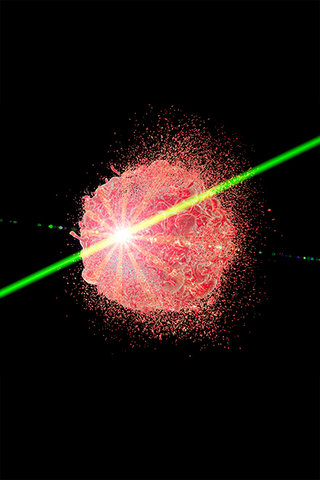Flash Radiotherapy Is (Finally) on the Way
Since the 1960s, the dream of ultra-fast high dose radiation promised better cancer treatment with fewer side effects. Will the reality measure up?
For more than 100 years, radiation has been a pillar of cancer treatment. But the practice—hitting cancer cells with beams of intense energy—doesn’t come without a cost to the body. Radiation can damage nearby healthy cells and tissue, with hair loss and rashes at the point where the treatment is focused along with a variety of more serious complications depending on where the tumor is located and what kind of tissue receives the collateral damage.
Experiments in the 1960s hinted at a more effective, if counterintuitive, approach: dramatically increasing the dose rate. In animal models, high dose rate radiation delivery was far more toxic to cancer cells and, oddly, less damaging to nearby normal cells. A European team made this discovery by chance while studying the effects of radiation dose rate on oxygen depletion, not cell survival. “But the in vivo ramifications of their finding were not fully appreciated at the time,” says radiobiologist Charles Limoli at the University of California, Irvine.
Other teams soon confirmed the findings using animal models—ultra-high dose rate irradiation caused significantly fewer side effects while controlling tumor growth. Translating the idea to a clinical technique, however, has proved difficult. “A variety of technical challenges remain before this treatment can be applied in clinics throughout the world,” Limoli says.
